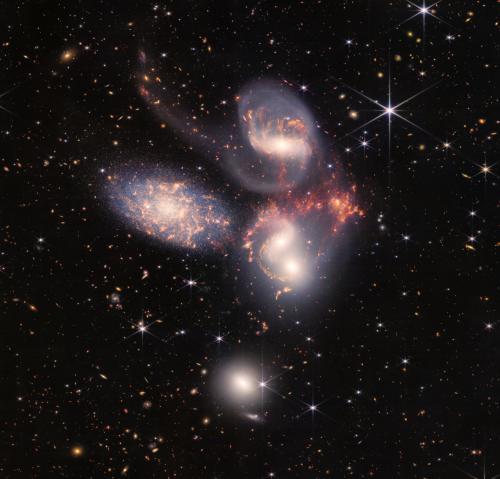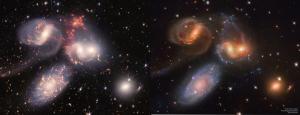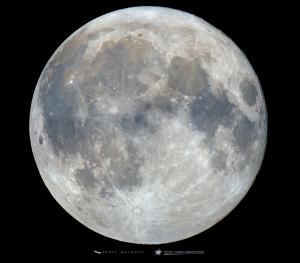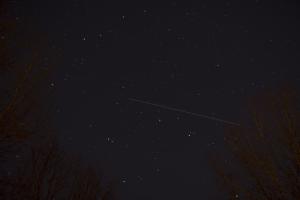Celebration of Space - July 15, 2022
This past Tuesday, July 12, 2022, the first science images captured by the James Webb Space Telescope (JWST) were released to the public. Expectations were very high and the images certainly did not disappoint! The images that were released showcased a series of different objects that represent a taste of what we can expect from the JWST. Unfortunately, only one Northern Hemisphere object was on the list – Stephan’s Quintet, which is a tightly bound cluster of four galaxies, with a fifth galaxy in the view, but not connected to the group. Though the view of the quintet was quite striking, it wasn’t so much the quintet galaxies in the image that drew my attention. Instead it was the sheer number of background galaxies that were visible in the image. Another image that was released of a galaxy cluster with gravitational lensing in the southern constellation Volans also had the same striking number of background galaxies present. These images reminded me of the Hubble Deep Field and Ultra Deep Field, which changed our understanding of how many galaxies are actually out there. Check out a comparison image we put together of the image from JWST and from the Hubble Space Telescope. The JWST image is on the left. Now is the time to get excited about the great things to come from JWST! Take a moment, if you haven’t already, to geek out with the first images released.
Now that the JWST has begun releasing images, raw data sets are becoming available as well, just like they do with all other NASA projects. When digging through some of the commissioning data sets, an image of Jupiter was discovered. Though the image is not all that visually impressive (there is still a learning curve with capturing and processing JWST data) but one really awesome component stood out in the images – Jupiter’s rings! Check out the image. Look at the left side of the left image for a view of Jupiter’s rings with Jupiter’s atmospheric features visible. That’s fantastic!
This past Wednesday, July 13, 2022 at 2:38 pm ET, the July Full Moon occurred. The July Moon carries the moniker The Full Buck Moon. This is related to Native American, Colonial American, and European sources as the time of the year that male deer have their antlers at full growth. The July Moon was also a supermoon in 2022 as the lunar perigee (closest point to Earth) occurred on July 13th at 5:09 am. Additionally, it was the closest full Moon to Earth for the year. When driving shortly after sunset on Wednesday night the Moon rose in haze and cast a fabulous reddish hue onto the thin clouds around it. Certainly a beautiful sight.
Now that the International Space Station (ISS) is back over our region during the nighttime hours, fantastic views of the station are possible all night long. Though they will begin to wane into only the evening hours over the next couple of weeks. With the new JWST images being released, there are so many reasons to look up. Having the ISS visibly pass over our region is just a nice added bonus to the view, and it can be seen even under heavy light pollution. Here are several notable passes for this weekend and coming week:
Fri, Jul 15 at 9:59 pm, starting in the W, rising to 31°, heading towards the NE
Sat, Jul 16 at 9:10 pm, starting in the WSW, rising to 47°, heading towards the NE
Sun, Jul 17 at 9:59 pm, starting in the WNW, rising to 19°, heading towards the NNE
Mon, Jul 18 at 9:10 pm, starting in the WNW, rising to 24°, heading towards the NE
Wed, Jul 20 at 9:11 pm, starting in the NW, rising to 17°, heading towards the NNE
ISS passes are very easy to see, they may start dimly over the horizon where the pass is starting from, but the station will get increasingly brighter as it gets higher in the sky, eventually looking like an airplane that does not blink. Though the pass times that are listed are for Southern New England sky watchers, these times can be used for any observers in the Northeast region. Now set your alarms and pencil in these dates on your calendar to set out for a fabulous summer evening with the ISS – humanity’s only continuously inhabited space based residence.
Save the date!
https://frostydrew.org/IDEA-Expo
On Saturday, August 6, 2022 from 2:00 pm – 5:00 pm, Frosty Drew Observatory and Science Center will be hosting our second annual Inspire, Discover, Enlighten, and Awe (IDEA) Expo. This is a fundraising event that will showcase all the amazing things we are doing at Frosty Drew Observatory and Science Center alongside new projects, programs, and events we are developing. Solar telescopes will be set up in the Observatory Courtyard offering views of the atmospheres of the Sun. We will also have a station that showcases the history of our organization as well as information on who Edwin “Frosty” Drew was, and why he is our namesake. Ever wonder how a telescope works? Well Frosty Drew Astronomy Team member Derek will have a Dissect A Telescope station set up, and will introduce you to the inner workings of telescopes. But the centerpiece of the day will be our new 24 inch PlaneWave CDK600 telescope that we installed into the Frosty Drew Observatory in late 2021. So make it a beautiful Saturday afternoon in Ninigret Park and come out to support Frosty Drew Observatory and Science Centers mission to enlighten, discover, inspire - through education and research - knowledge about science, the night sky, and the universe.
- Author:
- Scott MacNeill
- Entry Date:
- Jul 15, 2022
- Published Under:
- Scott MacNeill's Columns





